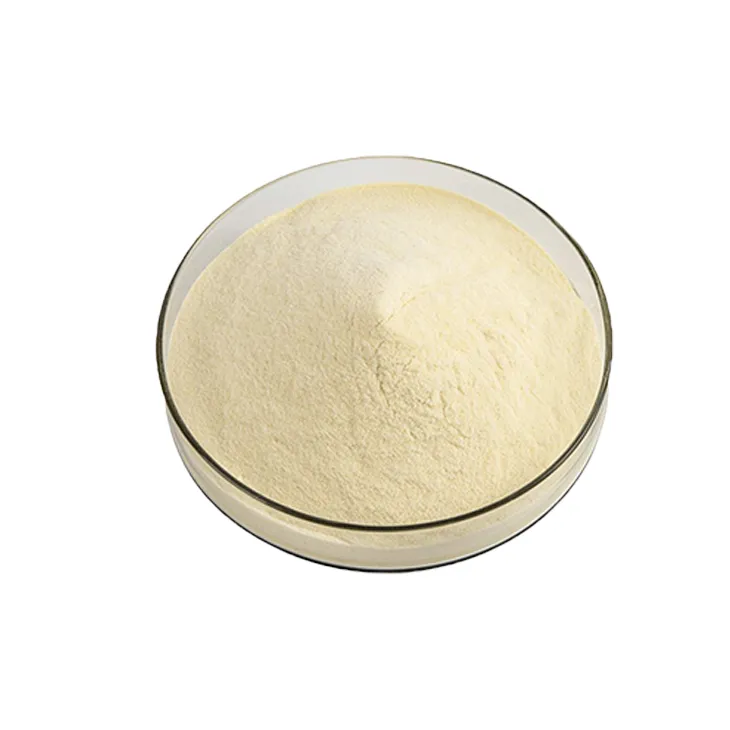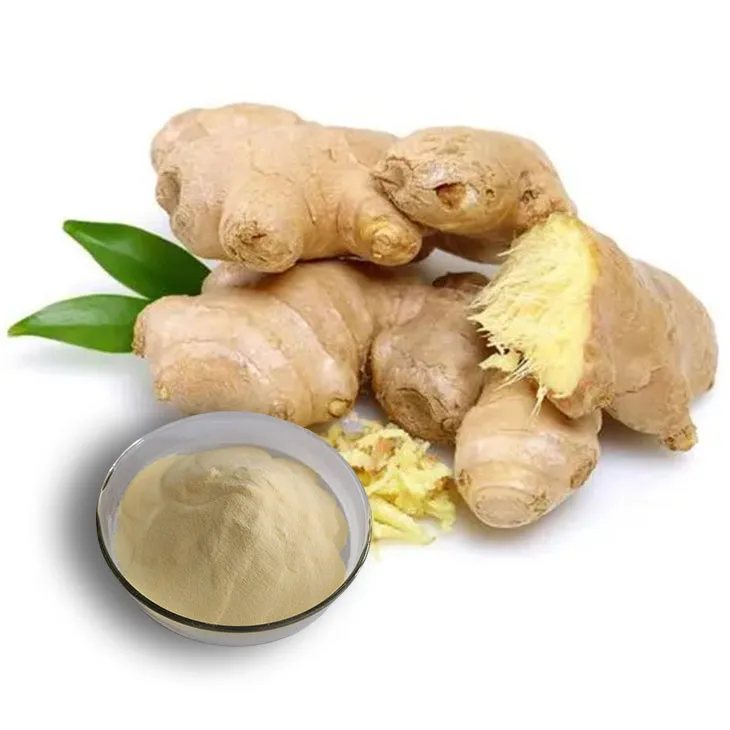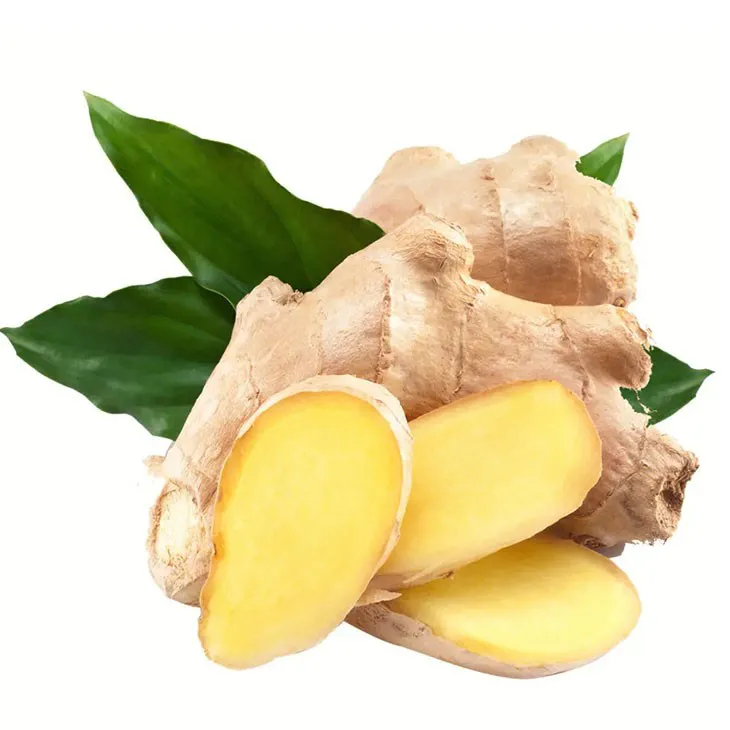- 0086-571-85302990
- sales@greenskybio.com
The extraction process of ginger extract.
2024-11-28

1. Introduction
Ginger (Zingiber officinale Roscoe) has been used for centuries in traditional medicine and cooking due to its unique flavor and various health - promoting properties. Ginger Extract, which is rich in bioactive compounds, has found wide - ranging applications in the food, pharmaceutical, and cosmetic industries. The extraction process is crucial to obtain these valuable components effectively. This article will delve into the detailed extraction process of Ginger Extract.

2. Raw Material Selection
High - quality fresh ginger is the starting point for a successful Ginger Extract production. When selecting ginger, several factors need to be considered:
- Appearance: The ginger should have a smooth and firm skin without any signs of mold or decay. The color should be a healthy light brown to yellowish - brown.
- Origin: Ginger from regions known for their high - quality ginger production is often preferred. For example, ginger from India, China, and Indonesia is renowned for its excellent quality.
- Season: Ginger harvested at the right time of the year tends to have better flavor and a higher content of bioactive compounds. Generally, mature ginger is more suitable for extraction.

3. Cleaning
Once the ginger is selected, it must be thoroughly washed to remove dirt, soil, and other impurities. This step is essential to ensure the purity of the final extract. The cleaning process can be carried out in the following ways:
- Manual cleaning: For small - scale production, ginger can be scrubbed gently under running water using a soft brush to remove any adhering dirt.
- Mechanical cleaning: In large - scale industrial settings, mechanical washing machines can be used. These machines are designed to handle a large quantity of ginger and can effectively remove dirt and debris.

4. Drying (Optional)
Drying the ginger can be part of the extraction process, depending on the extraction method. There are two main options:
4.1. Partial Drying
Partial drying is sometimes preferred when using certain extraction solvents. It helps to reduce the moisture content of the ginger without completely drying it out. This can be achieved by:
- Air - drying: Spreading the ginger in a well - ventilated area for a short period, usually a few hours to a day, depending on the ambient humidity and temperature.
- Low - temperature drying: Using a drying oven set at a relatively low temperature (around 40 - 50°C) for a short duration to gently remove some of the moisture.
4.2. Full Drying
Full drying is necessary for some extraction methods or for long - term storage of the ginger before extraction. The following methods can be used for full drying:
- Sun - drying: This is a traditional method where ginger is spread out in the sun for several days until it is completely dry. However, this method is highly dependent on weather conditions and may not be suitable for large - scale production.
- Hot - air drying: Using a drying chamber with a controlled temperature and airflow, ginger can be dried more quickly and uniformly. Temperatures typically range from 50 - 70°C, and the drying time can vary from a few hours to several days depending on the thickness of the ginger pieces.

5. Grinding
After cleaning and, if applicable, drying, the ginger needs to be ground into small pieces or powder. Grinding is an important step as it increases the surface area of the ginger, which in turn enhances the extraction efficiency. There are different types of grinding equipment that can be used:
- Mortar and pestle: This is a traditional and simple method suitable for small - scale grinding. It can be used to crush ginger into small pieces or a coarse powder.
- Blender: A common household appliance, a blender can be used to grind ginger into a relatively fine powder. However, it may not be as effective for large - scale production.
- Industrial grinders: In commercial settings, industrial grinders such as hammer mills or ball mills are used. These machines can handle large quantities of ginger and produce a fine and uniform powder.
6. Extraction
The extraction of ginger extract involves using a solvent to dissolve the bioactive compounds from the ground ginger. There are two main types of solvents commonly used:
6.1. Solvent - based Extraction with Ethanol
Ethanol is a popular solvent for ginger extraction due to its ability to dissolve a wide range of bioactive compounds. The extraction process using ethanol is as follows:
- Prepare a suitable concentration of ethanol solution. Typically, a 70 - 95% ethanol solution is used.
- Mix the ground ginger with the ethanol solution in a ratio that is optimized for extraction. For example, a ratio of 1:5 (ginger to ethanol solution by weight) may be used.
- Allow the mixture to soak for a certain period, usually several hours to a few days. During this time, the bioactive compounds in the ginger are gradually dissolved into the ethanol solution.
- Stir the mixture occasionally to ensure good contact between the ginger and the solvent and to promote the extraction process.
6.2. Solvent - based Extraction with Water
Water is another commonly used solvent for ginger extraction, especially in applications where ethanol - free extracts are required. The water - based extraction process is as follows:
- Use distilled or deionized water to ensure purity. Heat the water to a suitable temperature, usually around 60 - 80°C, as warm water can enhance the extraction efficiency.
- Mix the ground ginger with the warm water in an appropriate ratio. For example, a ratio of 1:10 (ginger to water by weight) can be used.
- Let the mixture soak for a period similar to that in ethanol extraction, usually several hours to a day or two.
- Stir the mixture at regular intervals to facilitate the extraction.
7. Filtration
After the extraction process, the next step is to separate the solid ginger residue from the liquid extract. Filtration is used to achieve this. There are different types of filtration methods:
- Simple filtration: Using a filter paper in a funnel, the liquid extract can be poured through the filter paper to separate the solid particles. This method is suitable for small - scale extraction.
- Vacuum filtration: In a laboratory or small - scale industrial setting, vacuum filtration can be used. A Büchner funnel and a vacuum pump are used to speed up the filtration process and obtain a clearer extract.
- Industrial filtration: For large - scale production, industrial - scale filtration systems such as plate - and - frame filters or membrane filters are employed. These systems can handle large volumes of extract and provide efficient separation of the solids and the liquid.
8. Concentration
The filtered ginger extract may still contain a large amount of solvent, which may need to be removed to obtain a more potent extract. Concentration is carried out under reduced pressure, which has several advantages:
- Preservation of bioactive compounds: Reduced - pressure concentration helps to minimize the degradation of bioactive compounds due to lower operating temperatures compared to traditional evaporation methods.
- Energy efficiency: It requires less energy compared to high - temperature evaporation methods.
- Optimization of Ginger Extract Production: A Comprehensive Review"
- "The Science Behind Ginger Extract: Extraction Methods and Bioactive Compounds"
- "Ginger Extract: From Raw Material to High - Quality Extract - An Analytical Perspective"
The concentration process typically involves using a rotary evaporator in a laboratory or a more sophisticated vacuum concentration system in an industrial setting. The solvent is gradually removed, leaving behind a more concentrated ginger extract rich in bioactive compounds such as gingerols and shogaols.
9. Conclusion
The extraction process of ginger extract is a multi - step procedure that involves careful selection of raw materials, cleaning, optional drying, grinding, extraction with suitable solvents, filtration, and concentration. Each step plays a crucial role in obtaining a high - quality ginger extract rich in bioactive compounds. With the increasing demand for natural products in various industries, understanding and optimizing the ginger extract extraction process is of great significance for both producers and consumers.
FAQ:
What are the important steps in the ginger extract extraction process?
The important steps include selecting high - quality fresh ginger and washing it thoroughly, then drying it partially or fully. Grinding the ginger into small pieces or powder, soaking it in a solvent (such as ethanol or water) for a period, filtering to separate the solid residue from the liquid extract, and finally concentrating the extract under reduced pressure.
Why is high - quality fresh ginger chosen for ginger extract extraction?
High - quality fresh ginger is chosen because it is likely to contain a higher amount of bioactive compounds. These compounds, such as gingerols and shogaols, are valuable components in ginger extract. Lower - quality ginger may have less of these beneficial substances or may be contaminated, which could affect the quality and effectiveness of the extract.
What is the role of solvents in the ginger extract extraction process?
Solvents like ethanol or water play a crucial role in the extraction process. They are used to dissolve the bioactive compounds present in the ginger. By soaking the ground ginger in the solvent, the desired components can be extracted from the solid ginger into the liquid solvent, which can then be separated from the solid residue through filtration.
Why is filtration necessary in the ginger extract extraction process?
Filtration is necessary to separate the solid ginger residue from the liquid extract. After soaking the ginger in the solvent, there will be a mixture of the dissolved bioactive compounds in the solvent and the remaining solid ginger material. Filtration helps to obtain a pure liquid extract, which can then be further processed (such as concentration) to get a more potent ginger extract.
How does concentration under reduced pressure enhance the ginger extract?
Concentration under reduced pressure helps to remove the solvent from the liquid extract. This results in a more potent ginger extract as the relative amount of the bioactive compounds (such as gingerols and shogaols) in the remaining liquid becomes higher. It also helps in reducing the volume of the extract, making it more concentrated and potentially more effective for various applications.
Related literature
- ▶ Hesperidin
- ▶ citrus bioflavonoids
- ▶ plant extract
- ▶ lycopene
- ▶ Diosmin
- ▶ Grape seed extract
- ▶ Sea buckthorn Juice Powder
- ▶ Beetroot powder
- ▶ Hops Extract
- ▶ Artichoke Extract
- ▶ Reishi mushroom extract
- ▶ Astaxanthin
- ▶ Green Tea Extract
- ▶ Curcumin Extract
- ▶ Horse Chestnut Extract
- ▶ Other Problems
- ▶ Boswellia Serrata Extract
- ▶ Resveratrol Extract
- ▶ Marigold Extract
- ▶ Grape Leaf Extract
- ▶ blog3
- ▶ Aminolevulinic acid
- ▶ Cranberry Extract
- ▶ Red Yeast Rice
- ▶ Red Wine Extract
-
Fenugreek Extract Powder
2024-11-28
-
Passionflower Extract
2024-11-28
-
Dandelion Leaf Extract
2024-11-28
-
Diosmin
2024-11-28
-
Marigold Extract
2024-11-28
-
Phyllanthus Emblica Extract
2024-11-28
-
Boswellia Serrata Extract
2024-11-28
-
Almond Extract Powder
2024-11-28
-
Alisma Extract
2024-11-28
-
Grape Seed Extract
2024-11-28





















